
Berkhamsted is a historic market town in Hertfordshire, England, in the Bulbourne valley, 26 miles (42 km) north-west of London. The town is a civil parish with a town council within the borough of Dacorum which is based in the neighbouring large new town of Hemel Hempstead. Berkhamsted, along with the adjoining village of Northchurch, is encircled by countryside, much of it in the Chiltern Hills which is an Area of Outstanding Natural Beauty (AONB).
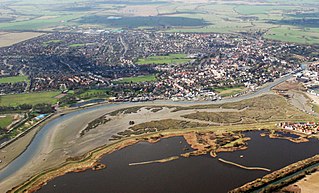
Maldon is a town and civil parish on the Blackwater estuary in Essex, England. It is the seat of the Maldon District and starting point of the Chelmer and Blackwater Navigation. It is known for Maldon Sea Salt which is produced in the area. In 2011 the parish had a population of 14,220 and the district had a population of 61,700.
Esher is a town in the borough of Elmbridge in Surrey, England, to the east of the River Mole.
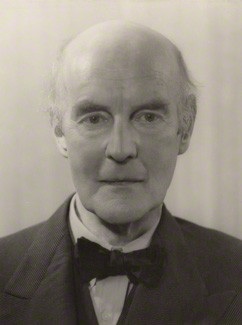
Sir Edward Brantwood Maufe, RA, FRIBA was an English architect and designer. He built private homes as well as commercial and institutional buildings, and is remembered chiefly for his work on places of worship and memorials. Perhaps his best known buildings are Guildford Cathedral and the Air Forces Memorial. He was a recipient of the Royal Gold Medal for architecture in 1944 and, in 1954, received a knighthood for services to the Imperial War Graves Commission, with which he was associated from 1943 until his death.

Sir Reginald Theodore Blomfield was a prolific British architect, garden designer and author of the Victorian and Edwardian period.

The Rex is a cinema in the town of Berkhamsted, Hertfordshire, England. Designed in the art deco style by David Evelyn Nye in 1936, the cinema opened to the public in 1938. After 50 years of service, the cinema closed in 1988 and became derelict. The building was listed Grade II by English Heritage, and following a campaign to save the Rex by a local entrepreneur, the cinema re-opened to the public in 2004.
Thomas Plume was an English churchman and philanthropist, and founder of a library in Maldon, Essex which still exists. The Plume School in Maldon is named after him.

Ashlyns School is a mixed secondary school and sixth form located in Berkhamsted, Hertfordshire, England. The school was established in 1935 as the final location of the Foundling Hospital, a children's charity founded in London in 1739. The Berkhamsted building converted into a school in 1955. Ashlyns School is noted as an example of neo-Georgian architecture and is a Grade II listed building.

John Belcher was an English architect, and president of the Royal Institute of British Architects.
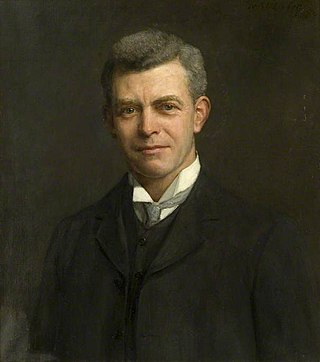
Sir Charles Archibald Nicholson, 2nd Baronet, was an English architect and designer who specialised in ecclesiastical buildings and war memorials. He carried out the refurbishments of several cathedrals, the design and build of over a dozen new churches, and the restoration of many existing, medieval parish churches.
Joseph Clarke (1819–1888) was a British Gothic Revival architect who practised in London, England.
Charles Baily, was an English architect and archaeologist. He worked initially in Nottinghamshire, then moved to London.

The Parish Church of St Peter, Great Berkhamsted, is a Church of England, Grade II* listed church in the town of Berkhamsted, Hertfordshire, in the United Kingdom. It stands on the main High Street of the town and is recognisable by its 85-foot (26 m) clock tower.

Egerton House was a small Elizabethan mansion which stood on the High Street in the town of Berkhamsted, Hertfordshire in England. Built during the reign of Queen Elizabeth I, it was demolished in 1937 and the site is now occupied by the Art Deco Rex Cinema. As well as its architectural merit, Egerton House was noted for its occupancy by the Llewelyn Davies family and its literary association with J. M. Barrie, author of Peter Pan.
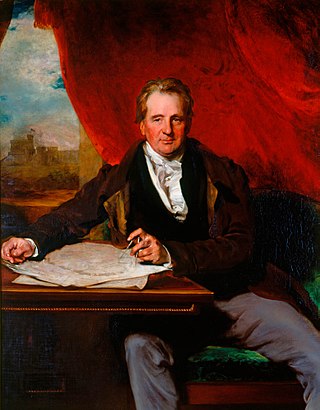
Sir Jeffry Wyatville was an English architect and garden designer. Born Jeffry Wyatt into an established dynasty of architects, in 1824 he was allowed by King George IV to change his surname to Wyatville. He is mainly remembered for making alterations and extensions to Chatsworth House and Windsor Castle.

Dean Incent's House is a 15th-century timber-framed house in Berkhamsted, Hertfordshire, England. It is reputed to be the birthplace of John Incent, a dean in the Church of England who held office at St Paul's Cathedral from 1540 to 1545.
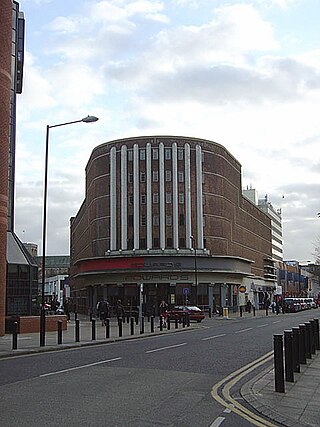
The Embassy Theatre is a historic structure on Broadway in the city of Peterborough in the United Kingdom, which operated as a cinema from 1953 to 1989.

The Embassy Cinema is a former cinema in the town of Chadwell Heath, Greater London. It was once known, among locals, as The Gaumont. It was designed in an art deco style, with a streamline moderne interior, by Harry Weston in 1934. The building is situated on the border of Redbridge and Barking & Dagenham, in the Chadwell Heath District Centre. The cinema closed in 1966 and became a Bingo Hall. In 2015, following the closure of the Bingo Hall, it was then used as a wedding hall/banqueting suite. The building was listed as an Asset of Community Value by the 'Chadwell Heath South Residents' Association' in August 2017 and is currently the focus of a major cinema restoration project.
James Bettley is a British architectural historian, whose publications include editions of the Pevsner Architectural Guides to Essex (2007), Suffolk (2015) and Hertfordshire (2019). In 2019-20 he served as High Sheriff of Essex.




















